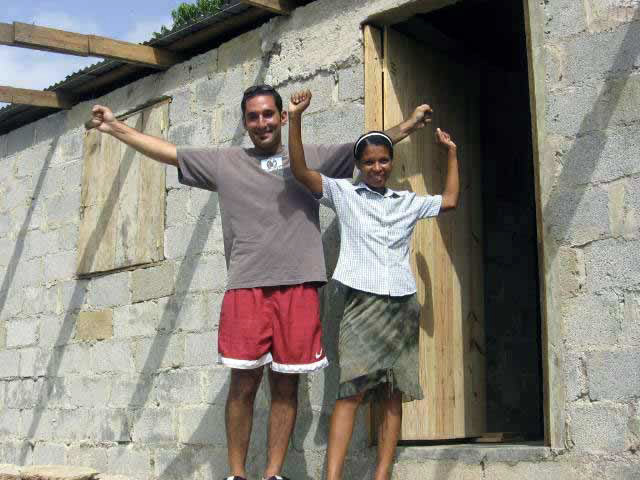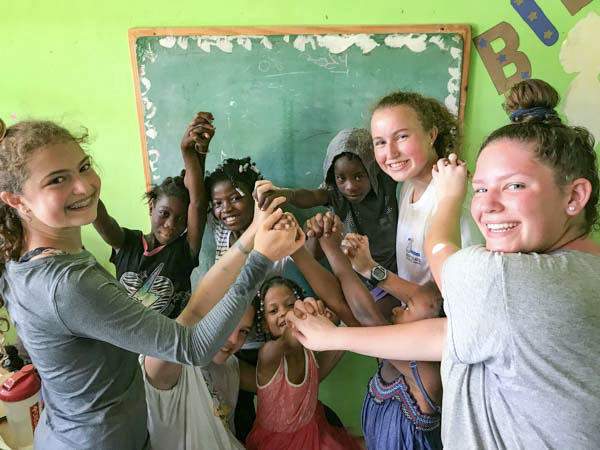Volunteer programs given them the opportunity to do good away from home.
By Susan Garland
The summer after her sophomore year in high school, Jaclyn Feldman left her comfortable home in a Washington suburb to spend a month in Belize. But instead of lolling around the beach, Feldman and about 18 other teens traveled inland to a rural village as part of a trip organized by Global Routes of Northampton, MA. During the days, Feldman mixed cement and sawed metal rods for the foundation of a new school cafeteria. At night, she and another American girl bunked with a local family.
Social critics may bemoan the money-oriented values of teens, but Global Routes and other summer programs that feature community service in places such as Ecuador, Ghana, and Fiji are deluged with applicants. “We’re finding that students are willing to step out of their comfort zone,” says Jeffrey Shumlin, co-director of Putney Student Travel in Putney, VT.
Feldman, 18, now a senior, says when she first arrived at her host family’s home, she wasn’t sure how she could live in a dark bedroom barely big enough to fit the bunk beds. Also, the family of eight used an outhouse. “By the end, I thought about my house and how ridiculous it was to have all that empty space,” she says.
Most programs abroad geared to high school students last about a month and offer teens a chance to work in orphanages, farms, and animal sanctuaries. Typically, 15 to 20 students travel with two or three adult leaders—often teachers on summer break. They work on a project for at least two weeks, and spend the rest of the time sightseeing and participating in adventure activities such as whitewater rafting. In most cases, the project will fulfill at least part of a high school’s community service requirement.
The cost to students of digging a latrine and sleeping in a hut can run from $4,000 to $6,000. “We look to the local communities for technical expertise and help, but we pay for most of the supplies ourselves,” says Erik Werner, director of Global Works in State College, PA. Many programs still have openings for this summer, but trips to some exotic locales such as India and Tanzania may be booked.
Teens need to be prepared for physical hardship. Carter Smith, 17, a high school senior in Montclair, NJ, traveled with Putney to Costa Rica after her freshman year and to India two summers later. In Costa Rica, where she helped build a communal kitchen, she slept in a sleeping bag in a building crawling with bugs. “It’s definitely not for everyone,” she says.
A good place to look for programs is on the Thomson Peterson’s Web site (petersons.com). Once you have settled on a few, speak to teens who have traveled with the groups and their parents. Ask the trip sponsors about evacuation procedures and other measures they will take in case of illness or emergencies. “You need to find out whether the organization has a good track record with a particular country,” says Helaine Isaacs, a consultant with Tips on Trips & Camps (tipsontripsandcamps.com).
Carole Lester, 41, who has led groups for Global Routes, says she’s usually able to stay in daily touch with the U.S., either by e-mail or phone. “I was on safari in Kenya when a parent needed to reach one of the students, and our contact in Nairobi drove four hours to meet us,” she recalls.
For parents, sending a teenager to an isolated village can be a nail-biter. But for their children, such a trip is a chance to make a difference — in others’ lives and in their own.
Do-Good Vacations
· Global Routes: globalroutes.org; 413.585.8895
· Global Works: globalworksinc.com; 814.867.7000
· Putney Student Travel: goputney.com; 802.387.5000
· VISIONS Service Adventures: visionsservice.wpengine.com; 406.551.4423
· Where There Be Dragons: wheretherebedragons.com; 800.982.9203
· World Horizons International: world-horizons.com; 800.262.5874






